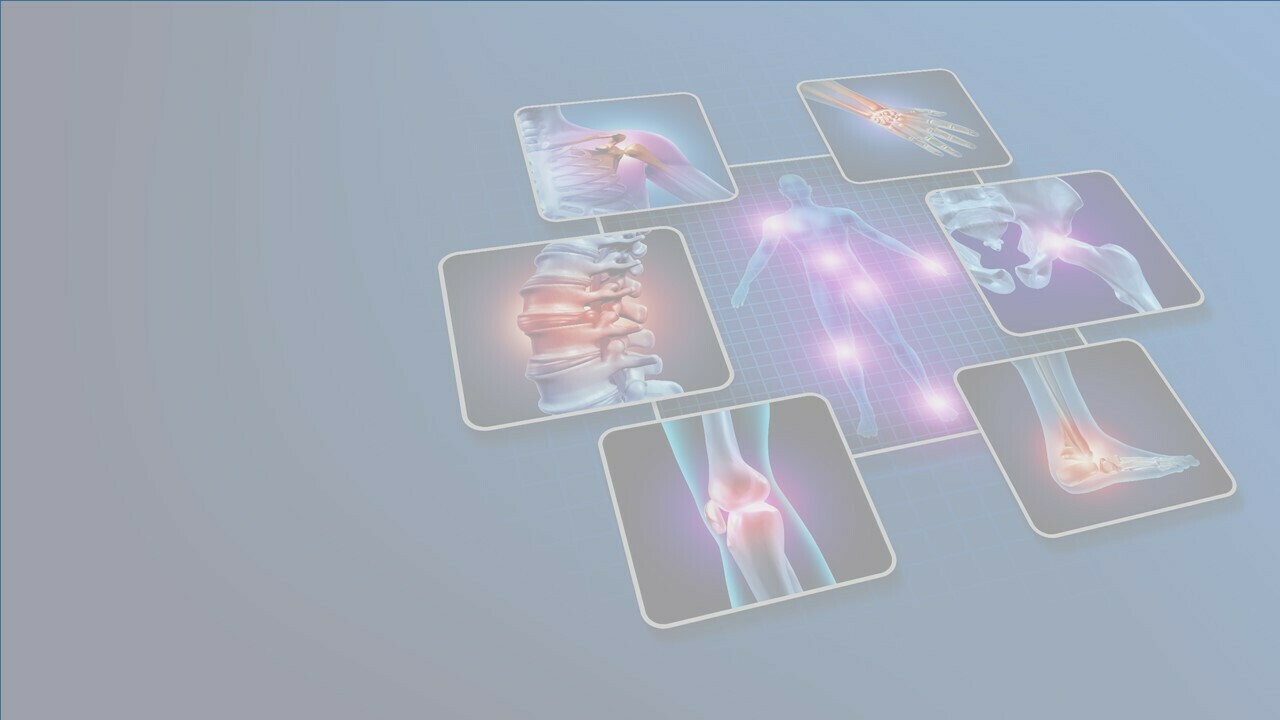
Arms and legs
Please note: the information below relates only to the orthopaedics department at the Maria Middelares General Hospital site.
Our Orthopaedics and Traumatology Department has many orthopaedic surgeons, all with their own expertise and speciality. Below are some of the most frequent orthopaedic complaints, listed by anatomical region, with some additional explanation and a reference to doctors specialising in these issues. Every orthopaedist is additionally qualified to treat traumas that enter our hospital through the A&E, among others.
Foot and ankle
Foot and ankleOur feet can be divided into three larger parts: the hindfoot, the midfoot and the forefoot. They consist of a complex structure of bones, ligaments, muscles and tendons. All parts in this structure need to work together correctly to be able to stand, walk, jump, etc. The ankle allows us to move our foot in different directions.
Foot or ankle problems may be caused by acute injury, a wrong movement or overburdening certain structures.
Conditions and treatments
| Toe misalignment | Achilles tendon pain | Forefoot pain |
| Flat feet | Ankle pain | Lower heel pain |
| Fractured ankle | Upper heel pain | Deformation of one or more toes |
| Fractured heel bone |
Diabetic Foot Clinic
Diabetic patients with slow-healing wounds on their feet are welcome to come for a consultation each Friday at the diabetic foot clinic at Maria Middelares General Hospital. To make an appointment, call +32 (0)9 246 13 50.
Hand and wrist
Hand and wristOur hands are connected to the lower arm through the wrist. The hand and wrist consist of many little bones that are connected through ligaments. The muscles and tendons in the hand and lower arm allow us to move them. Three important nerves running through the hand that ensure that you can feel etc.
In addition to acute injury, hand and wrist issues often occur due to overburdening and trapped nerves.
Conditions
| Forearm pain | Tingling fingers |
| Spring finger | Scarring in the palm |
Knee
KneeThe knee is the joint that functions as the hinge between the thigh and the lower leg. At the front, the knee is protected by the kneecap. The presence of cartilage, e.g. the meniscus, allows for smooth movement of the knee. On the other hand, various ligaments, such as the cruciate ligaments, ensure stability of the knee.
Knee pain can be caused by wear and tear over many years, inflammation, overburdening or acute injury.
Conditions
| Knee osteoarthritis | Injuries of the cruciate ligaments/collateral ligaments | Meniscus tears |
| Kneecap problems | Cartilage injuries | Runner's knee |
Hip
HipThe hip is where our legs are connected to the upper body. The hip contains the hip joint, which is a ball-and-socket joint that, due to its flexibility, delivers a great degree of freedom of movement. The joint consists of the hip socket (formed by the pelvis) and the femoral head (on the thigh bone) that fit precisely into each other. Cartilage ensures that a joint can function without any friction.
Many hip complaints occur when there is serious wear and tear of the cartilage.
Conditions
| Hip osteoarthritis | Bumping hip |
| Avascular necrosis | Clicking hip |
Shoulder
ShoulderThe shoulder connects the upper arm and the shoulder blade and consists of three bones: the shoulder blade, the upper arm bone and the collarbone. Due to the complex interaction between bones and muscles, the shoulder is a very flexible joint.
In addition to acute injury, shoulder complaints often occur due to overburdening or the wear and tear of muscles and tendons.
Conditions
| AC joint dislocation | Instability | Shoulder dislocation |
| Bicep problems | Tendon calcifications | Shoulder prosthesis |
| Impingement/AC osteoarthritis | Rotator cuff tears |
Elbow
ElbowThe elbow is the joint that connects the upper arm bone with the ulna and radius in the lower arm. The elbow allows us not only to bend and extend our arm but also to turn our lower arm and hand. A robust joint capsule and the ligaments ensure stability. Additionally, important nerves run from the neck and shoulder to the hand through the elbow.
Symptoms may be caused if one of the parts of the elbow does not function in the way it should.
Conditions
| Inner elbow pain | Outer elbow pain | Internal elbow pain |
Something wrong or unclear on this page? Report it.







